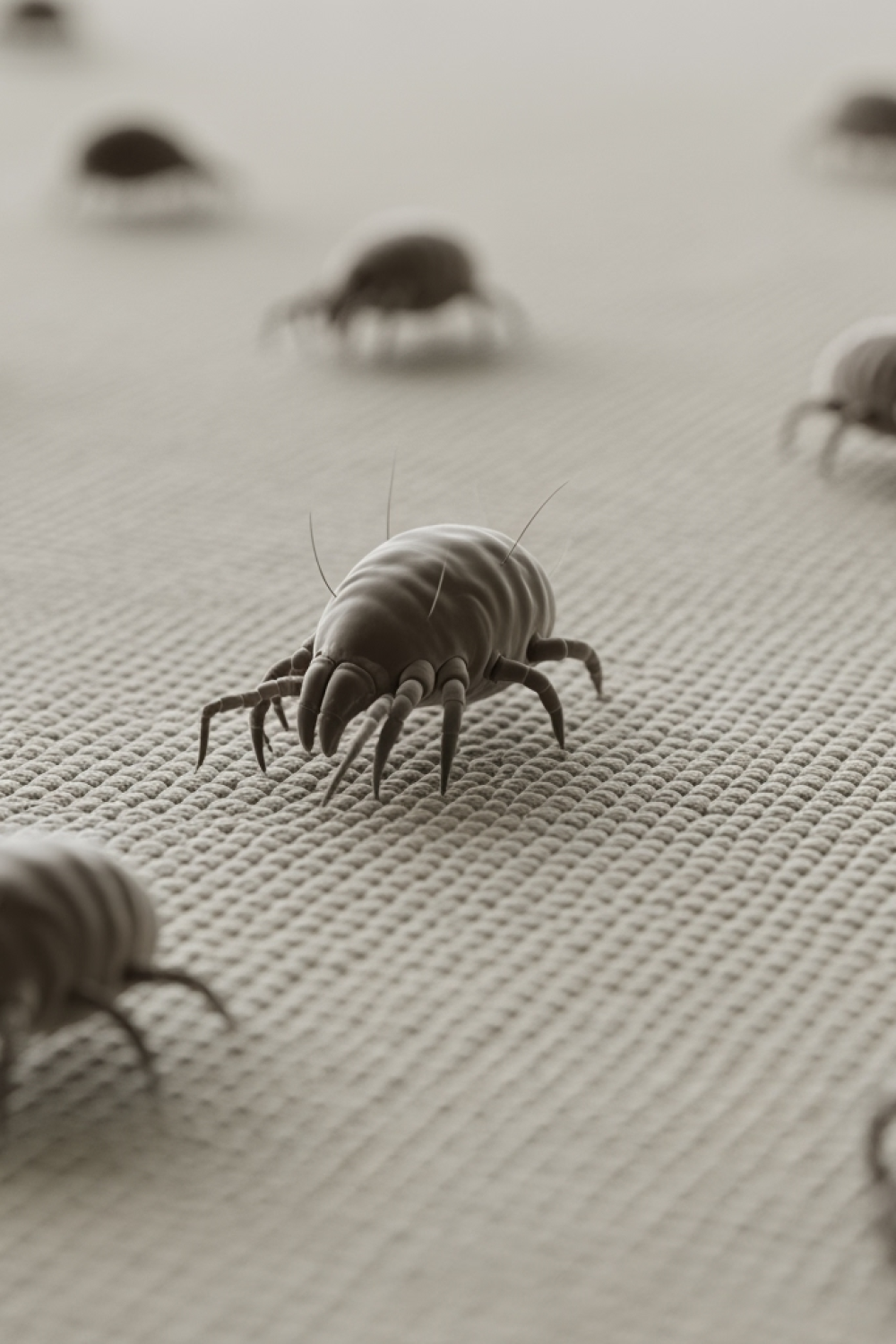Want to save this recipe?
Enter your email below and we’ll send the recipe straight to your inbox!
Your mattress is much more than a cozy cocoon… It’s also an ideal refuge for unwanted guests! These tiny dust mites make themselves comfortable in your bedding, feeding on your skin flakes and enjoying the moisture you release during sleep. But don’t worry, solutions exist to restore peaceful nights and a healthy environment.
Why worry about dust mites in our beds?
Dust mites aren’t just an unpleasant thought – they can have a real impact on our health. These microscopic arthropods (less than 0.5 mm) are invisible to the naked eye, but their droppings are powerful allergens. Morning sneezing, itchy eyes, runny nose, or even worsening asthma – that’s their calling card. And did you know that a mattress can harbor up to 2 million of these little creatures after a few years of use?
Baking soda: the natural ally against dust mites
This white powder that you probably have in your cabinet is your best friend for sanitizing your mattress. Baking soda neutralizes odors, but most importantly, it disrupts the environment favorable to dust mites.
How to use it effectively?
- Remove all bedding and vacuum the bare mattress to eliminate initial debris.
- Sprinkle generously with baking soda over the entire surface. Don’t be stingy – use about 250g for a double mattress.
- Gently massage with a soft brush to help the powder penetrate the top layers of fabric.
- Let it work for 4 to 8 hours (ideally a full day). The longer the action time, the more effective the treatment.
- Vacuum thoroughly with a vacuum cleaner ideally equipped with a HEPA filter to capture the finest particles.
Bonus tip: For enhanced action, add 10 drops of tea tree, lavender, or eucalyptus essential oil to your baking soda before applying. These oils have natural mite-killing properties.
Sun exposure: a free and powerful treatment
Direct sunlight is an excellent natural disinfectant. UV rays are particularly effective against dust mites and other microorganisms.
How to proceed?
- Choose a sunny, dry day.
- Place your mattress vertically facing the sun.
- Let it be exposed for at least 3 hours, turning it over halfway through.
Important note: Avoid this method if your mattress contains latex, which can degrade in the sun. Similarly, check the manufacturer’s recommendations before exposing to UV.
Regular maintenance: the key to prevention
Occasional elimination of dust mites is effective, but regularity makes all the difference.
Adopt these anti-dust mite habits:
- Wash your bedding at minimum 60°C every 1-2 weeks (this temperature is lethal for dust mites)
- Air your bedroom daily for 15 minutes, even in winter
- Keep room humidity below 50% using a dehumidifier if necessary
- Vacuum the mattress once a month
- Use certified anti-dust mite covers for mattresses and pillows
Mistakes to absolutely avoid
Don’t make these missteps that favor dust mites:
- Making your bed immediately after getting up (moisture remains trapped)
- Leaving clothes on the bed or plush toys (they accumulate dust)
- Neglecting to clean areas adjacent to the bed (rugs, curtains, baseboards…)
- Using harsh chemical products without rinsing (they can irritate the respiratory tract)
- Insufficiently drying bedding before putting it back in place
Health benefits of a dust mite-free mattress
Investing time in these natural methods will bring you considerable advantages:
- Better quality sleep (fewer nighttime awakenings related to allergic reactions)
- Reduction of allergy symptoms (congestion, sneezing, skin irritations)
- Decrease in asthma attacks in sensitive individuals
- Strengthened immune system (less exposed to constant allergens)
- Increased longevity of your mattress (less degradation related to microorganisms)
When to consider replacing your mattress?
Even with perfect maintenance, no mattress lasts forever. Experts recommend replacement every 7 to 10 years. Here are signs indicating it’s time for a change:
- Visible sagging points
- Spring noises or creaking
- Waking up with unexplained back pain
- Worsening allergies despite regular cleaning
- Persistent stains or odors despite treatments
In summary: a simple and effective action plan
To keep your bed free of dust mites, adopt this easy-to-follow routine:
- Weekly: Washing all bedding at high temperature
- Monthly: Baking soda treatment of the mattress
- Quarterly: Sun exposure (if possible) or deep cleaning
- Daily: Airing the bedroom and unmade bed for 15 minutes
These simple gestures will transform your sleep space into a sanctuary of well-being, away from allergens and microscopic sleep disruptors. Not only will you sleep better, but your immune system will thank you every morning when you wake up.
FAQ: Your questions about dust mites
Are anti-dust mite covers really effective?
Yes, provided you choose certified models with a mesh size of less than 10 microns. They create a physical barrier that dust mites cannot cross.
Is a standard vacuum cleaner sufficient to eliminate dust mites?
A classic vacuum captures some of the mites and their droppings, but a model with a HEPA filter is much preferred, as it prevents the finest particles from being released back into the air.
Are children more sensitive to dust mite allergies?
Indeed, their developing immune systems and faster breathing make them more vulnerable. Hence the importance of taking special care of the youngest ones’ bedding.
Can pure tea tree essential oil be used on the mattress?
No, it is not recommended to apply essential oil directly. Always dilute it in a carrier such as baking soda to avoid any risk of irritation or staining.

